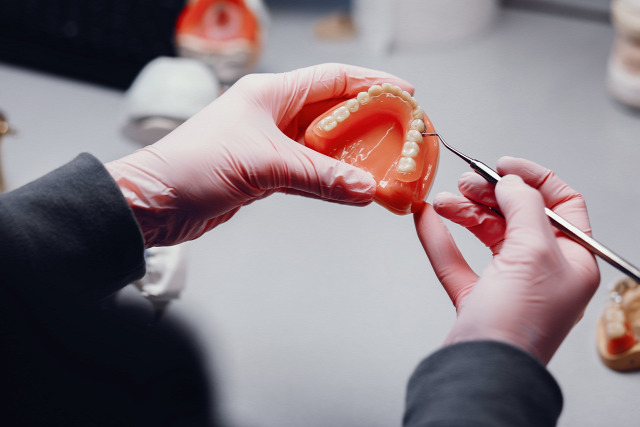
Surgical/Sharp Debridement is a critical procedure in wound management and tissue repair, aimed at removing necrotic, infected, or devitalized tissue from wounds to promote healing. Whether caused by trauma, infection, or chronic conditions such as diabetes or vascular disease, non-viable tissue can impede the body's natural healing process and increase the risk of complications.
It plays a crucial role in restoring tissue viability, reducing the risk of infection, and facilitating wound closure. As the prevalence of chronic wounds and surgical interventions continues to rise, the global market for surgical/Sharp debridement is witnessing significant growth and innovation.
Importance of Surgical/Sharp Debridement
Surgical/Sharp Debridement is a fundamental component of wound care and tissue regeneration, addressing both acute and chronic wounds across various medical specialties. By removing necrotic tissue, foreign material, and biofilm from wounds, surgical debridement creates a clean and healthy wound bed conducive to healing.
According to BIS Research, the Global Surgical/Sharp Debridement Market, valued at $199.5 million in 2022, is on a trajectory of robust growth and is anticipated to reach $295.9 million by 2030. This market is expected to expand at a compound annual growth rate (CAGR) of 5.05% during the forecast period of 2023 - 2030.
Key Market Dynamics
Several factors are driving the growth of the global surgical/sharp debridement market:
Increasing Incidence of Chronic Wounds:
- Chronic wounds like diabetic ulcers, pressure ulcers, and venous ulcers are widespread.
- Pose significant healthcare burden globally, affecting millions annually.
- Aging population and rising chronic conditions drive demand for wound management solutions.
- Surgical debridement usage, including diabetic ulcers, is expected to rise.
Advances in Surgical Techniques and Technologies:
- Technological advancements enhance surgical debridement.
- Improve safety, precision, and outcomes.
- Innovations like ultrasonic, hydrosurgical, and laser-assisted debridement emerge.
- Offer targeted and efficient tissue removal with minimal trauma.
Focus on Infection Control and Antibiotic Stewardship:
- Infection prevention is crucial in wound management.
- Surgical debridement reduces bacterial burden and biofilm formation.
- Improves antimicrobial therapy effectiveness.
- Reduces systemic infection and sepsis risk.
Click on the link to download the FREE sample PDF report on Surgical/Sharp Debridement Market Research.
Surgical/Sharp Debridement Market Segmentation
By Surgical Debridement Methods:
a. Sharp Debridement:
- Manual removal of non-viable tissue using surgical instruments.
- Instruments include scalpels, scissors, or curettes.
- Performed by trained healthcare professionals in clinical settings.
b. Enzymatic Debridement:
- Application of proteolytic enzymes or topical agents.
- Digests necrotic tissue and aids in its removal.
- Often used with sharp or autolytic debridement.
c. Mechanical Debridement:
- Physical removal of necrotic tissue using mechanical forces.
- Methods include wet-to-dry dressings, hydrotherapy, or NPWT.
- Promotes autolysis and granulation tissue formation.
d. Autolytic Debridement:
- Natural breakdown and removal of necrotic tissue.
- Occurs via body's own enzymes and immune cells.
- Facilitated by occlusive dressings or advanced wound care products.
By Wound Types:
a. Acute Wounds:
- Result from traumatic injuries, surgical incisions, or burns.
- Require debridement to remove devitalized tissue.
- Facilitates primary intention wound healing.
b. Chronic Wounds:
- Persistent wounds like diabetic ulcers, pressure ulcers, or venous ulcers.
- Fail to heal within expected timeframe.
- Often need aggressive debridement and adjunctive therapies.
By End-Users:
a. Hospitals and Clinics:
- Surgical debridement performed by surgeons or wound care specialists.
- Also done by trained nursing staff.
b. Ambulatory Surgical Centers (ASCs):
- Outpatient facilities for surgical procedures like debridement.
- Perform under local anesthesia or conscious sedation.
- Offer convenience and cost-effectiveness for patients.
Future Market Challenges and Opportunities
While surgical/sharp debridement plays a crucial role in wound management, challenges such as variability in clinical practice, limited access to specialized care, and healthcare disparities exist. However, ongoing efforts to standardize debridement protocols, enhance clinician training, and leverage technology-enabled solutions offer opportunities to improve patient outcomes and reduce healthcare costs. By promoting interdisciplinary collaboration, patient-centered care models, and evidence-based practice guidelines, the surgical/sharp debridement market can continue to advance wound care and contribute to improved quality of life for patients worldwide.
Conclusion
The Global Surgical/Sharp Debridement Industry is integral to the management of acute and chronic wounds, offering effective solutions for tissue removal and wound healing. As the prevalence of chronic wounds continues to rise and the demand for advanced wound care technologies grows, surgical debridement remains a cornerstone of wound management across various healthcare settings. By embracing innovation, collaboration, and evidence-based practice, the surgical debridement market can continue to drive improvements in wound care outcomes, enhancing the quality of life for patients and promoting healthcare sustainability for years to come.


